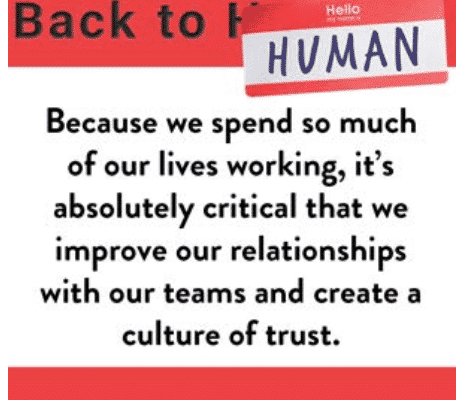Check out Part 1 of this series where we discuss the logical fallacy of believing you are entitled to your opinion, Part 2 involving the destruction nature of alternative facts (lies), and Part 3 about deceiving with the truth.
Now that we’ve covered false opinions, lying with the truth (paltering), and lying without the truth (alternative facts), it’s time to discuss what we can do about it. According to Stephen M. R. Covey in The Speed of Trust, trust is the most powerful form of motivation in organizations and is the ultimate source of influence. Therefore, to build and maintain a culture brimming with inspiration, engagement, and authenticity, we must embrace the truth.
It should seem easy to embrace truth, but how well is that message getting to those on your team? Are they sheltering you from the hard reality? Are they paltering to make it sound better then it is? Or are they lying by omission and commission because they are scared of the consequences associated with delivering bad news?
People are going to have to sit down and decide: Are we going to want to go over the moral consequences of telling an untruth? The mere fact of it being untrue? Or the fact that it’s bogus, baseless or groundless?—Geoffrey Nunberg, linguist professor at the University of California, Berkeley
Cultivating a truthful organization begins with us; we must lead with facts. To build up your level of trust through fact-based leadership, consider these ten ideas:
Pay Attention. You can’t define and confront reality if you don’t know what the team is feeling. Listen, show respect, and exhibit empathy for their opinions and emotions.
Lead with Questions. Instead of being the “answer guy/gal,” push, prod, and probe with questions. This Socratic style will enhance your understanding and provide a clear picture of reality and its implications.
Own Up. The easiest way to build trust is the simple acknowledgement of what’s really happening. Don’t pretend things are better than they are, but to avoid spreading doom n’ gloom, back up the bad with what is being done to fix it.
Conduct Autopsies. When things go wrong, it’s easy to dissect until you know the person(s) responsible. Instead of blame, work on solving the problem. If you can do this consistently, your team is more likely to bring you the issues without fear of reprisals.
Avoid Loyalty Tests. Some employees believe that they’ll get ahead by agreeing with you, even when you’re wrong. If you can escape the ego trap, show the team that healthy dissent will be rewarded, whereas mindless obedience will not.
Drop the Two F’s. To reestablish trust, leaders may need to change the behaviors that have propagated the lack of trust. Fear and Force are a dangerous combination that squash the unpleasant truths. Control these behaviors and you’re halfway to Trustville.
Engage in Dialogue. If you want the truth, your go-to reaction cannot be defensiveness. Stifle your natural instinct to debate or argue so your team knows they are being heard.
Teach Debate. According to Deakin University philosophy professor Patrick Stokes, “You are not entitled to your opinion. You are only entitled to what you can argue for.” To maintain truth, we sometimes need to fight for it. Show your team how to construct and defend their argument so they can effectively battle those who spread falsehoods.
Build “Red Flag” Systems. Develop a process where people can disagree in a safe way—no restrictions, no repercussions, no risk of alienation. These red flags can be used to challenge the team or the leader, share a personal anecdote, respond to a co-worker, present an analysis, make a suggestion, or ask a question.
Live it. Like every other leadership tenet, you have to model it before others will follow.
An organization based on lies will not last. An alternative fact does not increase your accounts receivable. No one needs your “opinion” about the effectiveness of the latest marketing campaign. And paltering can only result in decisions based upon faulty, incomplete information. Lead with facts and accept nothing less from your team.
Truth: So innovatively simple.
The Why Leaders Cannot Be Indifferent to the Truth series:
Part 1—You are NOT Entitled to Your Opinion
Part 2—The Destructive Nature of Alternative Facts (i.e. Lies)






